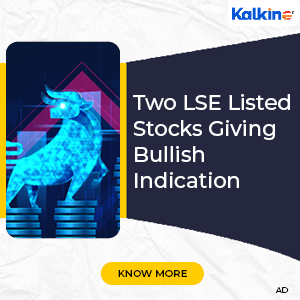Discount from retailers, departmental stores, e-commerce sites, payment banks, automobile sellers and real estate developers are pre-announced, and everyone gets to know about them. But identifying a discount on London Stock Exchange or any other stock exchange is relatively less obvious and rather a very tedious and complex job.
When one buys stocks carrying humongous growth potentials, he is called a growth investor; however, value investing is about identifying stocks which are trading on the stock exchange at a price below to its intrinsic value or at a fair value. It requires rigorous research and quantitative analysis to figure them out.
Here in this article, we are coving five important factors among various available ones, which could decide investment success:
- Sales growth (YoY) > 15% for the past 10-years
The reason we are emphasising sales growth on a Year-on-Year basis to be greater than 15%, is because if a company is able to report sales growth rate above nominal Gross Domestic Product (GDP) growth rate, which is around 4% in the UK and industry average sales growth rate which is approximately between 8-10% in broader industries, consistently over the past ten years, it reflects the companyâs offerings commands uniqueness in the market which creates a competitive advantage against its competition, and protects companyâs top-line for an extended period of time.
Here we are not talking about compounded growth rate, else we are emphasising on YoY sales growth rate > 15% over the past ten years, which reflects company's uniqueness built upon competitive advantage and a consistent growth over the past ten years indicates sustainability in the years to come as well, however, subject to other things remains constant.
- EBITDA Margin (YoY) > industry average over the past ten years.
The EBITDA Margin % (earnings before interest, tax, depreciation and amortisation margin) assesses the cash profit a company makes annually. Companyâs EBITDA margin provides better insights about its profitability against other profit margins as it excludes the effect of non-operating, non-cash nature items and taxes. It provides investors with a tool to analyse how well the company is utilising their funds and operating cash.
Also, it facilitates investors to analyse EBITDA margin over the years to check their progress as well as the companyâs effectiveness against all their competition within the industry.
If a company consistently is able to report EBITDA margin above the industry average over the past ten years, it reflects management efficiency of the company against the others, which helps investors to buy quality management within the league.
- Consistent positive Free Cash Flow
This Free Cash Flow is the most critical part for stock selection, as it reflects discretionary cash that a company is able to generate for its shareholders. If a company is not able to manage its expenses within their means of income; or is not able to save anything, then it is very likely to suffer a lot in future. The debt or loan companies raise to fund their expense have to be repaid in future over a predetermined interval, irrespective of their financial condition, business condition, or external challenges, which raises bankruptcy risk and lead to deterioration in the firm's health.
If a company is not able to generate positive free cash flow, then they are going beyond their capacity, and in such cases, they have to borrow money to fund and bear those expenses, which in long-run reduces the group's profitability by an increase in interest expenses and raises insolvency risks as well.
Free cash flow is calculated by deducting capital expenditure requirement from cash generated from operations.
A company which has been able to generate positive free cash flow consistently over the past ten years are more likely to fund their future growth from their internal resources and avoid debt borrowing and equity dilution which leads to lower profitability of the group. Also, it provides sustainability for future dividend payments which increases investor's return yield from investment (Capital appreciation + Dividend income).
Consistent positive free cash flow is one of the critical determining factors in equity investment and companies who are able to report consistent positive free cash flow, commands a higher premium in the market and irrespective of higher premium valuation they hand over a decent return to the investors over an extended period of time.
- Return on Capital Employed (ROCE)> 20% (YoY) over the past 10 years.
Return on Capital Employed or ROCE is one of the best success ratios to figure out how well the company is utilising its capital to make profit. Also, it reflects the consolidated effects of individual ratios like profitability margin, asset turnover ratio and leverage.
However, before understanding why ROCE should be greater than 20% on a YoY basis, we would like to throw some light on the Weighted Average Cost of Capital (WACC). As the company's capital is made up of equity and debt and the cost associated to both the sources differs, for a fundamentally sound company, in general, the cost of equity should always be higher against the cost of debt.
The average cost of debt in the UK is somewhere between 3-5% and an average cost of equity should be fundamentally in between 5-10%, which reflects the company has to earn somewhere around 15% on capital employed to meet its debt obligations and match equity investors expectations in terms of growth in dividend income, if a company is able to generate ROCE above 20% consistently, it can easily meet its debt obligations, dividend payment and retain enough funds for future growth as well.
- Earnings yield (%) > 10-Year UK Government Bond Yield (%)
Earnings yield (%) of a stock can be calculated by dividing Earnings Per Share (EPS) of the company with the current market price (CMP). As renowned investor Benjamin Graham in his book "Intelligent Investors" clearly mentioned that investors should compare stock's earnings yield with the bond yields to arrive at the margin of safety. Earnings yield provide an idea about how much stock could produce for every single "penny" invested in a particular company's stock.
The higher positive gap between Earnings Yield and 10-year Bond Yield provides a higher margin of safety for the investors. Also, the higher the difference between earnings yield and bond yield provide a higher degree of safety when the trading season is rough.
The above-mentioned factors are typically hard to find in every company because growth with sustainability is often missing in bad businesses, many companies may grow significantly faster in one or two years but sustaining those growth rates for an extended period of time is tough for them, and those who were able to sustain had time and again handed gargantuan amount of wealth for their shareholders.
However, the above-discussed factors are just not the only determining factors for picking up right stocks, as one has to look for other things as well but prima facie it could tell you a lot about the company's businesses and how strong its fundamentals are.


